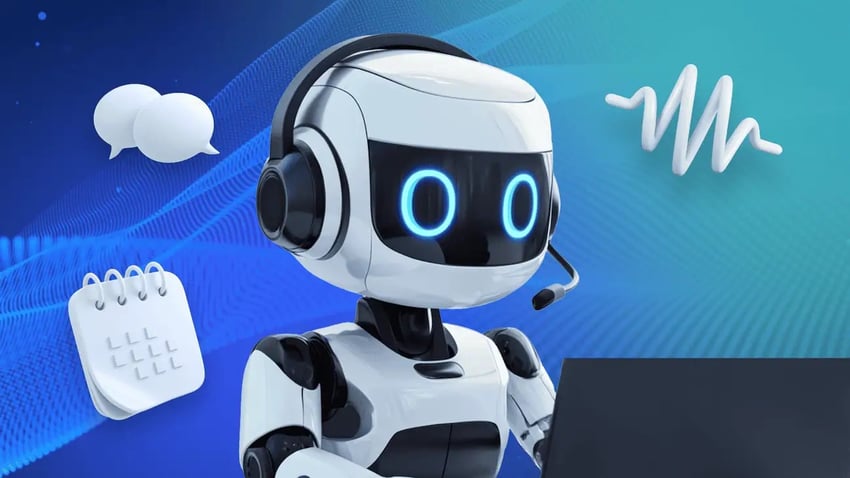When retailers expand beyond 20 locations, they face unique challenges in maintaining consistency, collecting reliable data, and creating loyalty programs that feel both unified and local. However, once a brand surpasses 200 locations, it likely follows a proven model for activating new locations.
In this guide, we’re focusing on companies with 20 to 200 locations.
The problems multilocation retailers face include fragmented systems, uneven customer experiences, and loyalty rewards that do not translate across channels, which can undermine repeat purchases and increase acquisition costs.
Read on to gain practical steps and action plans to drive engagement and growth across multiple locations.

Strategies To Increase Customer Loyalty
- Implement personalized omnichannel engagement.
- Design and optimize your loyalty program.
- Enhance in-store customer experiences.
- Leverage technology and analytics for continuous improvement.
- Integrate social and community engagement.
- Embed continuous feedback and program iteration.
Implement personalized omnichannel engagement
Customers expect the same level of personalization and convenience whether they are shopping online, via a mobile app, or inside a store. Consistent experiences across channels and devices reinforce your brand promise and make loyalty rewards more meaningful.
To create a connected customer experience, businesses need to bring point-of-sale (POS), loyalty, and support data into a single system. When these records live separately, teams operate with blind spots, and customers feel the disconnect.
Combining these systems provides marketing and operations with real-time insights into purchase history, reward balances, and recent service interactions. With that visibility, those areas of the business can respond more quickly, act more intelligently, and personalize outreach with greater confidence.
Imagine a customer returns a product. Their loyalty points are still updated immediately, and they receive a personalized apology offer by email soon after. That’s what modern service looks like — tight, relevant, and proactive. A shared data layer lays the groundwork, but it’s the coordination that brings it to life.
When a customer reaches a loyalty milestone, email triggers a congratulatory message or an exclusive reward. Two-way business SMS picks up the thread with time-sensitive, in-store offers based on location and visit history. In-app messages and kiosk displays reinforce the experience with reminders and tailored product suggestions the moment someone checks in.
To keep everything in sync, use workflows that prevent the same customer from receiving duplicate messages within 48 hours. That kind of coordination keeps communication clean and purposeful, with every touchpoint being meaningful and valuable.
In this video, Jessica reverse-engineers the customer success strategies you could apply to your company:

How to optimize omnichannel:
- Audit current data sources and map data flow.
- Choose an integration platform or middleware.
- Build an omnichannel campaign template for a single loyalty promotion.
- Test the messaging sequence with a small customer segment before scaling.
Design and optimize your loyalty program
A thoughtfully designed loyalty program becomes a reason for customers to return and a way to build lasting engagement and easy redemptions.
The strongest programs give customers a sense of progress, making rewards feel within reach, not abstract. Clear tiers, defined milestones, and simple redemption are essential.
Start by building a tiered structure with three or four levels. Labels such as Basic, Preferred, VIP, and Elite help customers understand their standing and what comes next. Assign each tier a clear point threshold, accompanied by visible benefits that encourage advancement.
Short-term incentives also matter. Offer time-based challenges that drive repeat visits, like awarding 200 bonus points for making three purchases in a month. Small wins help fill the gaps between major milestones.
Make advancement visible everywhere. For instance, display a progress bar in the mobile app and include it on printed receipts, allowing customers to track their rewards at a glance. When people see how close they are to reaching the next benefit, they’re more likely to keep going.
Enrollment needs to be frictionless. Offer sign-up options at every touchpoint, including QR codes at checkout, links in digital receipts, and embedded forms in your app. If customers hesitate, you’ve added too many steps.
After enrollment, update point balances in real time. Show rewards on customer portals, email statements, and in-store screens to reinforce the value of participation. Reward new members right away by giving them something they can use immediately, like a 10% discount on their next purchase. An instant reward helps turn a one-time sign-up into an ongoing habit.
💡Related: How To Build Customer Loyalty: 9 Effective Strategies
| Tier | Point Range | Reward Examples | Additional Perks |
|---|---|---|---|
| Basic | 0–499 points | 5% off next purchase | Welcome gift |
| Preferred | 500–1,499 points | 10% off purchases | Early access to sales |
| VIP | 1,500–2,999 points | 15% off plus free shipping | Invitation to VIP shopping nights |
| Elite | 3,000+ points | 20% off, free gift wrapping | Dedicated concierge support |
Introduce seasonal challenges tied to holidays or local events, such as double points during back-to-school week.
Enhance in-store customer experiences
Your physical stores play a key role in how customers experience your loyalty program. These locations are where you reinforce relationships, answer questions, and fulfill brand promises. The right tools, training, and incentives can help your team turn routine transactions into moments that strengthen loyalty.
Start by giving store associates real-time visibility into each customer’s loyalty status. Tablets or POS systems should show current tier levels and recent purchase history so employees can tailor interactions with ease. When staff have this context, it’s easier to make conversations feel personal and relevant.
Training should be short, practical, and easy to apply. A focused role-playing exercise can help teams practice greeting customers by name, offering thoughtful product suggestions, and checking point balances without slowing down the checkout process. Small details like these make a big difference in how the program feels to customers.
Support your staff with metrics that reflect their impact. Track loyalty sign-ups, redemptions, and event participation as part of their performance goals. When loyalty becomes part of how success is measured, teams are more likely to treat it as a priority.
Exclusive in-store experiences give loyal customers something to look forward to. Host tier-specific events like product preview nights for top-tier members or private hours for high-value customers. Run themed workshops that align with ongoing loyalty challenges, such as offering 300 points for attending a hands-on demo. These events can drive traffic while reinforcing the value of membership.
You can also use personal milestones to build goodwill. Offer birthday or anniversary rewards along the customer lifecycle that are easy to redeem, such as a free gift or a 20% discount valid throughout the entire month. Flexible rewards remove pressure and increase the chance of redemption.
How to drive loyalty in-store:
- Roll out training modules on using loyalty dashboards and soft skills.
- Coordinate with marketing to schedule monthly in-store events.
- Measure attendance and incremental revenue from loyalty events; adjust formats accordingly.
Apply technology for continuous improvement
Loyalty programs should evolve as your customers do. With the right tools and data, you can refine program mechanics, identify your most valuable customers, and take action early when engagement starts to wane.
Track what matters most for your brand. Focus on performance metrics that reveal both customer behavior and program impact. Repeat purchase rates, average order values, and loyalty enrollment percentages provide a clear view of how well your program is performing.
Real-time dashboards add another layer of value. If a regular customer hasn’t returned in 60 days, the system should flag it immediately. This allows you to trigger reengagement campaigns while there’s still time to recapture their interest.
Compare redemption rates across channels to identify areas of friction. If in-store rewards are going unused, there may be a process issue or a lack of staff awareness. Benchmarking helps you isolate the gap.
Top metrics to drive customer loyalty for in-person retail:
- Repeat purchase rate by store location
- In-store loyalty enrollment percentage
- Redemption rates at POS
- Average transaction value among loyalty members
- Frequency of visits per loyalty tier
Technology also helps you scale support while adding meaningful personalization. Chatbots can answer loyalty questions instantly, including point balances, tier progress, and upcoming offers. They should be available 24/7, especially through your mobile app and website.
Intelligent agents can also deliver product suggestions based on browsing history and loyalty status, helping customers discover new items they’re more likely to buy.
For your top-tier members, go a step further. Let them book VIP services directly through chat. Whether it’s a styling appointment, consultation, or early access event, offering direct booking makes the benefit feel exclusive and convenient.
Run quarterly segmentation updates to reclassify customers based on their latest activity and reset challenge objectives accordingly.
Integrate social and community engagement
Building a sense of belonging can turn occasional buyers into loyal advocates. Leverage social channels and local partnerships to make your loyalty program part of a larger community.
Loyalty grows stronger when customers feel like they’re part of something. Social engagement and local connections help transform occasional buyers into active participants in your brand community. By blending your loyalty program with real-world interactions, you create more reasons for customers to return and engage.
In this video, Jessica from Nextiva uncovers Chick-Fil-A’s customer experience strategy.

User-generated content is a simple but powerful way to build that connection. Offer loyalty points to customers who leave product reviews on your website or tag your brand on social media. This not only boosts visibility but also encourages authentic storytelling from real customers.
Photo contests add another layer of engagement. Invite loyalty members to share pictures of recent purchases or in-store visits and reward them with bonus points. Keep the entry process simple and the reward clear to encourage participation without friction.
Community partnerships extend your program beyond the store. Collaborate with local organizations such as schools, clubs, or charities, and reward members who attend sponsored events or volunteer with extra points. This type of engagement builds goodwill and shows that your brand invests in the people it serves.
Look for partnerships with nearby businesses that share your audience. For example, team up with a local gym or café to offer joint rewards. A customer who earns a certain number of points might receive a voucher for a free drink or a discounted class. This kind of shared incentive builds loyalty across both brands.
Events can also reinforce your connection to the community. Host art shows, pop-up markets, or hands-on workshops that bring people into the store. These moments help your brand feel local, relevant, and worth talking about.
How to connect local causes to customers:
- Identify the top three local causes or partners in each region.
- Draft a tiered customer to boost philanthropic activities (like spend level or frequency).
- Track joint event attendance and resulting new enrollments.
Use voice-of-customer feedback
A loyalty program should sit atop a rigorous Voice of Customer program. Preferences shift, behaviors change, and what engages members today may fall flat tomorrow. Continuous feedback and regular testing help you keep the program relevant, effective, and customer-focused.
Surveys are one of the most direct ways to gather insight. Automatically prompt loyalty members to complete a short Net Promoter Score survey after they redeem a milestone reward. Keep it brief, with no more than three questions, and time it to feel like a natural part of the experience.
To boost response rates, offer a small incentive. A bonus of 50 points can drive participation without skewing results.
Once the data comes in, break it down by tier, region, or age group. Patterns at this level can reveal opportunities you might miss in a top-line summary. If a specific tier reports low satisfaction, it could signal a gap in the perceived value of rewards. If a certain region underperforms, store-level execution may be the cause.
Testing allows you to move from assumptions to evidence. Run A/B experiments to compare how different program rules affect engagement. For example, test whether customers are more responsive to a 400-point requirement or a 600-point threshold to reach a new tier. Monitor which version leads to higher progression and retention.
Message timing can also influence outcomes. Try sending emails in the morning and SMS messages in the evening to see which format and time of day drive better click-through and redemption rates.
Apply what you learn. Refine your reward structure, optimize your communication cadence, and adjust your messaging themes according to performance. Every improvement, no matter how small, helps the program stay in tune with your customers and meet their expectations.
Rotate tests every quarter and establish a learning backlog to ensure insights are shared across regional teams.
How To Increase Customer Loyalty: Checklist for Retailers
Midmarket retail chains can create loyalty experiences that feel local at each storefront while benefiting from centralized data insights and scalable program mechanics.
This checklist will help you align your strategy with your program rollout across all your locations:
- Unified customer data and real-time dashboards
- Tiered rewards with visual progress tracking
- Seamless sign-up and redemption across channels
- Staff that is trained and empowered with customer insights
- Regular social and community engagement programs
- Automated surveys and A/B testing cadence
- Clear rollout plan with metrics and ownership
Roadmap for a successful launch
Deploying a loyalty program across 20–200 locations requires a phased approach, clear ownership, and robust metrics.
| Phase | Duration | Key Activities | Owner |
|---|---|---|---|
| Discovery | 4 weeks | System audit, KPI definition, vendor selection | CX leadership |
| Design | 4 weeks | Tier structure, user flows, training materials | Marketing and Ops |
| Pilot | 8 weeks | Launch in three markets, collect feedback, optimize | Pilot team |
| Rollout | 12 weeks | Full launch, staff training, omnichannel campaigns | Regional managers |
| Optimization | Ongoing | Quarterly A/B tests, NPS analysis, feature updates | Analytics and CRM team |
Upgrade to the Industry’s Best Customer Experience Platform
Nextiva provides top-rated integrated solutions for engineering customer success from the start.
Its unified customer experience management tools include omnichannel functionality and integration. Nextiva also provides a proven social media and reputation management platform geared for multilocation brands.
At every stage of your customer experience strategy, Nextiva has experts on hand to help you build, launch, and refine a loyalty program that drives real revenue and fosters lasting customer relationships.
Inbound and outbound voice, text, email, social, chat, video, and team messaging — you have it all covered with Nextiva.

















 Customer Experience
Customer Experience 















